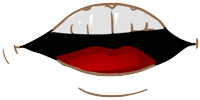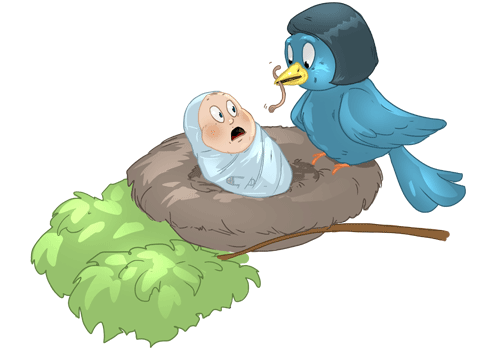Hungarian
Magyar nyelv
Magyar nyelv
about 15 million
Hungary: nearly 10 mln speakers, EU
Romania (2 mln), Slovakia (1 mln), Ukraine (250 000), Serbia, Croatia, Slovenia (together ab. 700 000) and Austria (50 000), regional language in Slovakia, Serbia and Slovenia.
USA, Canada, Israel, Germany, France, UK, Brazil, Russia, Australia, Argentina, Chile


The order of name, address and date is different than in other European languages:
The Hungarian language has a history of several thousand years reaching back to Asia. It is most widely regarded to be a member of the Finno-Ugric language family. It separated from most of the other Finno-Ugric languages about 3000 years ago near the Ural mountains. It has been strongly influenced by the Turkic languages. There is no written document from the prehistory of Hungarian.
The agglutinative structure and part of the basic vocabulary (the words kéz ‘hand’, vér ‘blood’, ló ‘horse’, hal ‘fish’, víz ‘water’, etc.) show a similarity with the Finnish. See also related words in Finno-Ugric languages. A considerable part of its ancient word stock can be traced to Turkic languages, e.g. gyümölcs ‘fruit’, alma ‘apple’, búza ‘wheat’, sajt ‘cheese’, sör ‘beer’, bor ‘wine’, disznó ‘pig’.
Old Hungarian script, the so-called rovás alphabet (runic script – from right to left) was changed to Latin alphabet during the reign of the first Hungarian king Stephen I (reigned 997-1038).

Source: Wikimedia Commons
Hungarian has 14 vowels and 25 consonants written with the basic Latin alphabet and 9 letters with diacritics (á, é, í, ó, ö, ő, ú, ü, ű).
Every vowel has a short and long version indicated by an ‘accent’ on the letter. Attention kor = ‘age’ – kór = ‘illness’!
| Letter | Example |
|---|---|
| a | nagy (big) |
| á | lány (girl) |
| e | nem (no, not) |
| é | szép (beautiful) |
| i | kicsi (small) |
| í | ír (write) |
| o | mozi (movie) |
| ó | jó (good) |
| ö | jön (come) |
| ő | főnök (boss) |
| u | kutya (dog) |
| ú | úgy (like that) |
| ü | ügy (affair) |
| ű | sűrű (dense) |
Every consonant can have a long version, though not at the beginning of a word (e.g. ebben ‘in this’, szebb ‘nicer’). Attention megy = ‘goes’ – meggy ‘(sour) cherry’!
| Letter | Example |
|---|---|
| p | szép (beautiful) |
| b | barát (friend) |
| t | téma (topic) |
| d | dél (noon) |
| ty | tyúk (hen) |
| gy | gyerek (child) |
| k | kicsi (small) |
| g | hideg (cold) |
| f | fa (tree) |
| v | van (is) |
| sz | szép (beautiful) |
| z | az (the) |
| s | és (and) |
| zs | zsák (bag) |
| h | hír (news) |
| c | cél (goal) |
| cs | csak (only) |
| dz | edz (harden) |
| dzs | dzsessz (jazz) |
| m | ma (today) |
| n | nem (no, not) |
| ny | anya (mother) |
| l | lány (girl) |
| r | ír (write) |
| j, ly | jön, lyuk (come, hole) |
Hungarian pronunciation is quite regular and smooth.
Hungarian has a special structure, where most of the grammatical and syntactic functions are expressed by word elements glued to the root of the basic word (agglutinative language).
The agglutinative character of Hungarian means that word forms often consist of several word elements (morphemes) which have their own functions. They take over the role of separate words such as prepositions or possessive adjectives, among others, in the Indo-European languages.
A noun word form can come into being in the following way: the plural suffix or the possessive suffix (equivalent of my, your, his etc.), the possessor suffix and the case endings are added to the basic word (see barátoméban).
The 18 case endings (their number is discussed) follow:
| Ending | Example | |
|---|---|---|
| Nominative | /- | barát (friend) |
| Accusative | -t/at/ot/et/öt | barátot (friend+acc) |
| Dative | -nak/nek | barátnak (to (a) friend) |
| Instrumental | -val/vel | baráttal (with (a) friend) |
| Causal-final | -ért | barátért (for (a) friend) |
| Translative-factive | -vá/vé | baráttá ((turn) into (a) friend) |
| Inessive | -ban/ben | barátban (in (a) friend) |
| Superessive | -n/on/en/ön | baráton (on (a) friend) |
| Adessive | -nál/nél | barátnál (at (a) friend) |
| Sublative | -ra/re | barátra (on(to) (a) friend) |
| Delative | -ról/ről | barátról (of/about (a) friend) |
| Illative | -ba/be | barátba (in(to) (a) friend) |
| Elative | -ból/ből | barátból (out of (a) friend) |
| Allative | -hoz/hez/höz | baráthoz (to (a) friend) |
| Ablative | -tól/től | baráttól (from (a) friend) |
| Terminative | -ig | barátig ((up) to (a) friend) |
| Formative | -ként | barátként (as/like (a) friend) |
| Essive-formal | -ul/ül | barátul (as (a) friend) |
Hungarian nouns can have up to 1000 different forms! There are also postpositions in Hungarian such as előtt ‘in front of’, mögött ‘behind’: a ház mögött ‘behind the house’.
The locative cases (and postpositions) express consequently the origin, the place and the direction as in Finnish:
| From where | Where | To where |
|---|---|---|
|
házból
(come) from house
|
házban
(be) in house
|
házba
(go) into house
|
|
ház mögül
(come) from behind house
|
ház mögött
(be) behind house
|
ház mögé
(go) behind house
|
Word formation in Hungarian is productive. The -ság/ség suffix can be always used for the production of an abstract notion as in jóság (goodness) and szépség (beauty). New verbs can easily be made from nouns by the suffix -z or -l:
Compounding is very common in Hungarian (therefore there are many very long words), such as:
The word tan (‘study, thesis’) is the basis of many other words:
The derivations for the verb ad (‘give’) by verb-prefixes show the scope of the change of meaning:
There is no grammatical gender in Hungarian, there are not even separate pronouns for she and he, only one ő (and only used emphatically). It is possible to read many pages of a novel without knowing the sex of the characters.
In the family relations age is important, there are simple words for younger sister húg and elder sister nővér, but no simple word for sister and they are used normally speaking about family. The same is true for brother where the speaker must specify the relative age with öcs or bátya.
Body parts that occur in pairs are used in the singular:
Szép szeme van
beautiful eye+her/his is
She/he has beautiful eyes.
There is no difference between tree and wood, both are fa, between skin and leather, both are bőr.









